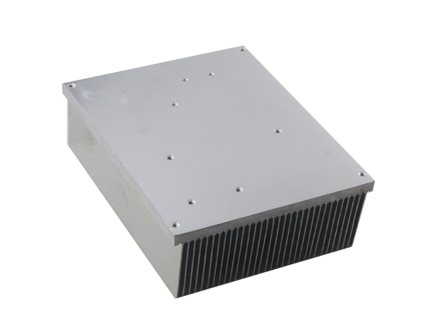It’s not difficult to see the aluminium extrusion in our lives.
In the industry, aluminum profiles can be transformed into different things such as equipment hoods, non-standard aluminum profile frames, aluminum profile conveyors, automated machinery and equipment, assembly lines, etc. Take Galuminium as an example, it’s dedicated to producing the aluminium extrusion for the heat transfer equipment, irrigation pipes, and furniture, etc.

It usages in the industry result from the advantages of the low weight, no rust, fast design change, low mold input and so on.
Also, in the construction, thanks to the property of being corrosion-resistant, aesthetic, anti-noise and good in the reflection of light and heat, even doors, windows and curtain walls would use it.
Besides the applications, do you know something about its manufacturing process?
The aluminum extrusion machine has two kinds of extruding processes: hot extrusion and cold extrusion.
The characteristic of the hot extrusion process
Hot extrusion is an extrusion molding technology adopted in several extrusion processes. It is a kind of extrusion molding of metal under the hot forging temperature due to good plasticity of materials. It is widely used in the production of pipes and profiles of non-ferrous metals like the aluminum, copper, etc. It is mainly used in the metallurgical industry.
Here are the advantages of it:
- The extrusion process is relatively simple, which just requires one extrusion molding, and fewer processing steps (only six kinds of equipment are needed to complete the finished product of the profile), and the production efficiency is relatively stable.
- Save raw materials and machining time.
- The extruded product is of good quality and high precision
- With smaller pressing force, it can squeeze products of high strength and large size.
The feature of the cold extrusion process
Cold extrusion is one of the processes of no chip and fewer chip parts. It means placing the metal blank into the mold cavity in the cold state, forcing the metal to be extruded from the cavity under strong pressure and a certain speed, obtaining the desired shape, size and extrusion with certain mechanical properties.
Here are the shining points:
- Efficiently save raw materials.
- Increase labor productivity.
- The parts can achieve the desired surface roughness and dimensional accuracy.
- Improve the mechanical properties of parts.
- Can process complex shapes and reduce part cost.
These two extrusion processes would produce different types of products. It’s recommended to choose the right producing equipment based on the product needed.
After it’s formed, some deficiencies like bubbles may appear in the products. You will probably find some bubbles on the surface or inside of the industrial aluminum profile, which are produced during industrial extrusion. These bubbles may negatively affect a product’s appearance.
Then what cause these bubbles? The analysis of the reason is as followed.
- Firstly, there is the residual air in the extrusion cylinder. Since the diameter of the aluminum rod is smaller than the diameter of the extrusion tube, it is necessary to apply pressure to the aluminum rod during extrusion, and entire extrusion tube needs to be filled. At this time, if the air is not completely discharged, the air will be squeezed. So in the aluminum rod, bubbles are formed when the aluminum profile is extruded.
- Secondly, it is the air residue in the hot shear furnace. It is well known that in some cases, it requires a hot-screw furnace to cut the heated aluminum rod into short rods and then they would be sent to the extruder for extrusion. If the aluminum rod is heated to the critical point, the deformation of the cutting surface will be more severe, especially It is the edge part that is particularly prone to retain air.
- Another reason may be the improper oiling leads to air residue.
- Unreasonable mold design could be the reason.
- Air remains at the junction of the two aluminum rods. Generally, if the sheer faces are not very flat aluminum rods, they are easy to carry air in the joints, which causes bubbles in industrial aluminum profiles.
- Excess pressure is too small. To save material, the last remaining amount of the aluminum rod may be too small when squeezed, so that the metal in the mold shunt hole is pulled out in the process; thus, there is a gap in the shunt hole.
If you’re a manufacturer, learn more about the extruding process may be helpful for you.



